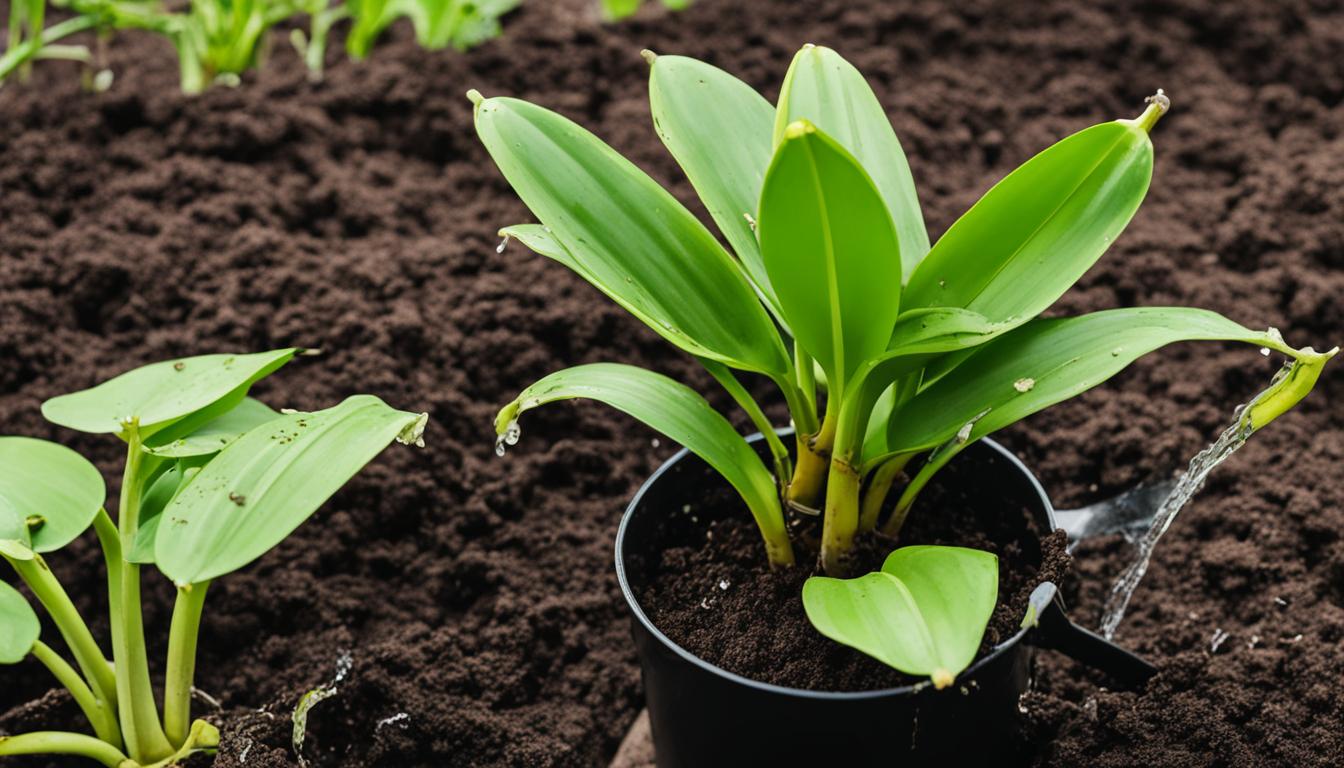Do you have a baby banana plant and aren’t sure how much water it needs? Proper watering is essential for keeping your plant healthy and happy. Overwatering and underwatering are common mistakes that can harm your plant, so it’s important to learn how to determine the water needs of your baby banana plant.
In this article, we’ll provide you with tips and tricks on how to assess whether your baby banana plant needs more or less water. We’ll also explore the proper techniques for watering your plant and provide insights on how to avoid overwatering and underwatering. By the end of this article, you’ll be confident in your ability to care for your baby banana plant’s water needs.
Let’s get started with exploring the signs to look for to determine if your baby banana plant requires more or less water.
Assessing the Water Needs of a Baby Banana Plant
Table of Contents
Understanding how to assess the water needs of a baby banana plant is crucial for maintaining its health and promoting optimal growth. By observing specific signs and indicators, you can adjust your watering routine to ensure that your plant receives the right amount of water. Here are some tips to help you know whether your baby banana plant needs more or less water.
Signs of Baby Banana Plant Needing More Water
- The soil is dry to the touch. Check the top layer of the soil to see if it feels dry, as this is a good indication that your plant needs watering.
- The leaves are wilting or drooping. If the leaves on your baby banana plant are looking limp or lifeless, it may be a sign that it needs more water.
- The plant is not growing as quickly as it should. If your baby banana plant seems to be lagging behind in growth or not producing as many leaves as it should, it may need more water to thrive.
Signs of Baby Banana Plant Needing Less Water
- The soil feels damp to the touch. Overwatering can be just as damaging to a baby banana plant as underwatering. If the soil feels consistently wet to the touch, your plant may be receiving too much water.
- The leaves appear yellow or brown. If the leaves on your baby banana plant are turning yellow or brown, it may be a sign that it is being overwatered.
- The plant starts developing root rot. This is a serious condition that can be caused by overwatering. Look for brown or mushy roots, a foul smell emanating from the soil, or a plant that seems to be wilting despite being well-watered.
Observing and understanding the signs of your baby banana plant’s water needs can be the key to promoting its health and vitality. Be sure to adjust your watering routine accordingly, and consult with a plant expert if you have any concerns about your plant’s condition.
Proper Watering Techniques for Baby Banana Plants
Watering a baby banana plant properly is crucial for maintaining its health and promoting growth. Here are some tips to help you water your baby banana plant correctly:
Finding the Right Amount of Water:
The amount of water a baby banana plant needs may vary depending on various factors such as temperature, humidity, soil type and more. One way to ensure you are giving your plant the right amount of water is by sticking your finger about an inch into the soil. If the soil feels dry at that depth, it’s time to water your plant.
The Best Watering Methods:
The best way to water a baby banana plant is by using a watering can or a hose with a gentle flow. Make sure the water reaches the soil around the base of the plant and not just the leaves. You can also mist the leaves with water, but avoid soaking them.
How Frequently to Water:
The frequency of watering your baby banana plant may depend on various factors, including the climate, container size, and plant size. A general rule of thumb is to water your plant about once a week, but you should always check the soil’s moisture level before watering. Overwatering can lead to root rot, while underwatering can cause the plant to wilt.
“Proper watering techniques can make all the difference when it comes to the health and wellbeing of your baby banana plant. Make sure you’re giving your plant the right amount of water, use the best watering methods and avoid overwatering or underwatering.”
Avoiding Overwatering and Underwatering
Finding the correct watering frequency is crucial for the health and vitality of your baby banana plant. Overwatering can lead to root rot and suffocation, ultimately killing your plant. On the other hand, underwatering can cause dehydration and stunted growth.
The best approach is to observe your plant carefully and adjust your watering routine based on its individual needs. The frequency of watering depends on various factors, such as humidity, temperature, soil quality, and plant size.
As a general rule of thumb, you should water your baby banana plant once a week during the growing season. However, if the soil feels dry to the touch before the week is up, it’s a sign that your plant needs more water.
To avoid overwatering, make sure that the soil is well-draining and does not hold water. You can achieve this by adding perlite or sand to the soil mix. Additionally, make sure to empty the saucer under the pot after watering to prevent water from accumulating.
To avoid underwatering, make sure to water your plant thoroughly, allowing the water to soak deep into the soil. You can achieve this by watering until water flows out of the drainage holes.
By following these tips, you can avoid overwatering and underwatering and ensure that your baby banana plant thrives.

